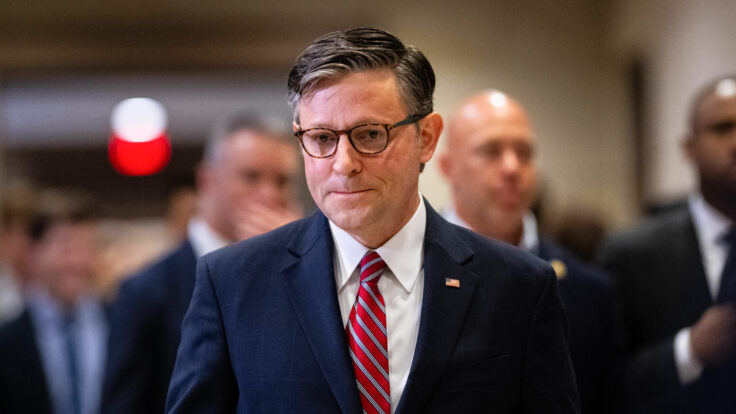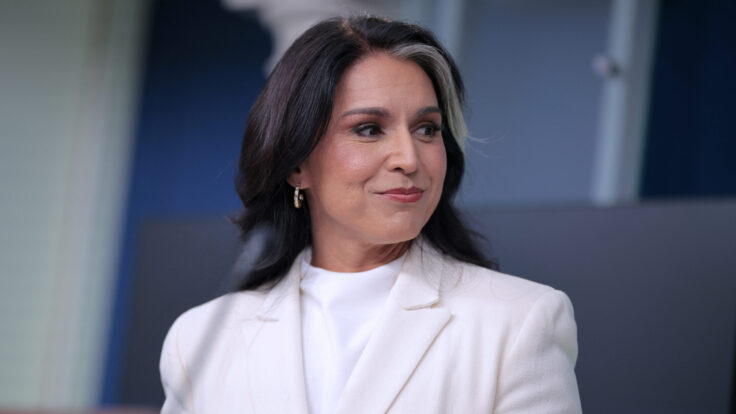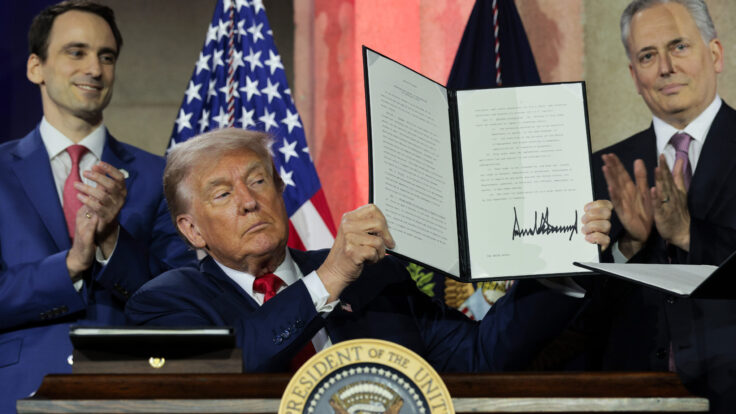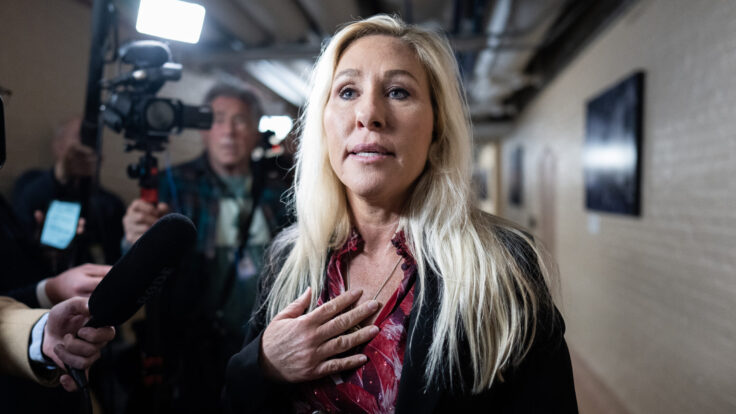 |
|
Hello as I recover from an insane crosscountry reporting journey: Last Friday, I went to Des Moines for the evangelical Family Leadership Summit, where literally every G.O.P. candidate who appeared was followed by a pastor. And then on Saturday morning, I flew to Palm Beach for the youth group Turning Point Action Conference, where an entire section of the convention center was transformed into a tropical beach club, complete with giant inflatable pool ducks, cornhole, spikeball, monstera leaves, and—I kid you not—an actual mechanical bull shaped like a great white shark. (This was my version of Barbenheimer.)
It was also the weekend that the DeSantis campaign went sideways, and boy is there some news for you inside today’s dispatch.
But first…
|
| The Capitol Hill Cafeteria Report |
|
| An utterly indispensable, high-minded, and, yes, occasionally dishy readout of what our lawmakers are really legislating behind closed doors.
By Abby Livingston
- Sinema v. Gallego: Six months into her defection from the Democratic Party, independent Kyrsten Sinema is in pretty solid financial shape—for now. This past quarter, she raised $1.7 million as she braced for a fearsome challenge via her longtime Phoenix-area political rival, Ruben Gallego. Sinema’s haul may seem paltry by modern Senate fundraising standards, but it’s worth pointing out that raising nearly $2 million outside of the party system (and with federal individual contribution limits) shows a measure of determination on Sinema’s part, amid speculation that she may not end up running for re-election after all.
But, to be clear, Gallego far outpaced her this cycle, raising $3.1 million with $3.8 million in cash on hand. It seems Sinema spent her off-cycle years banking money, and for now, has $16 million in her coffers—nearly four times Gallego’s balance sheet. All that said, Gallego is making up ground and will likely close the gap over the next year and benefit from the Senate Democratic super PAC/D.S.C.C. spending apparatus. And his institutional support is vast: I counted more than 20 Democratic House members who donated to Gallego’s campaign, including Nancy Pelosi and a 2012 House classmate of Sinema’s, Eric Swalwell. The G.O.P. side of the campaign is underfunded and disorganized as Republicans await Kari Lake’s decision on whether to run. This is expected to be one of the most competitive races on the map next year.
- Democratic Senators Back Slotkin: Ever since her spring campaign launch, at least 14 Democratic senators have donated to Michigan Rep. Elissa Slotkin’s Senate campaign via leadership PACs and campaign committees: Tammy Baldwin, Michael Bennet, Chris Coons, Catherine Cortez Masto, Kirsten Gillibrand, Maggie Hassan, Mark Kelly, Amy Klobuchar, Jeff Merkley, Jeanne Shaheen, Jon Tester, Mark Warner and Sheldon Whitehouse, among them. Also of note: Congresswoman Abigail Spanberger donated to Slotkin, as did a fellow Virginian, former Rep. Elaine Luria, who lost re-election last year.
Those women, along with Slotkin, formed a clique of 2018 class members who spent their pre-congressional careers in national security. (Slotkin has long been well-known around Washington as a former C.I.A. and Pentagon staffer.) And seven members of that cohort—including Lauria, Spanberger and Slotkin—effectively launched the first impeachment of Donald Trump with a mass-bylined Washington Post op-ed.
Slotkin is on pace to face a crowded Democratic primary field, including actor Hill Harper, in the race to replace Debbie Stabenow. But, as my colleague Tara Palmeri reported, Stabenow endorsed Slotkin early and has demonstrated an eagerness to run interference for the congresswoman.
|
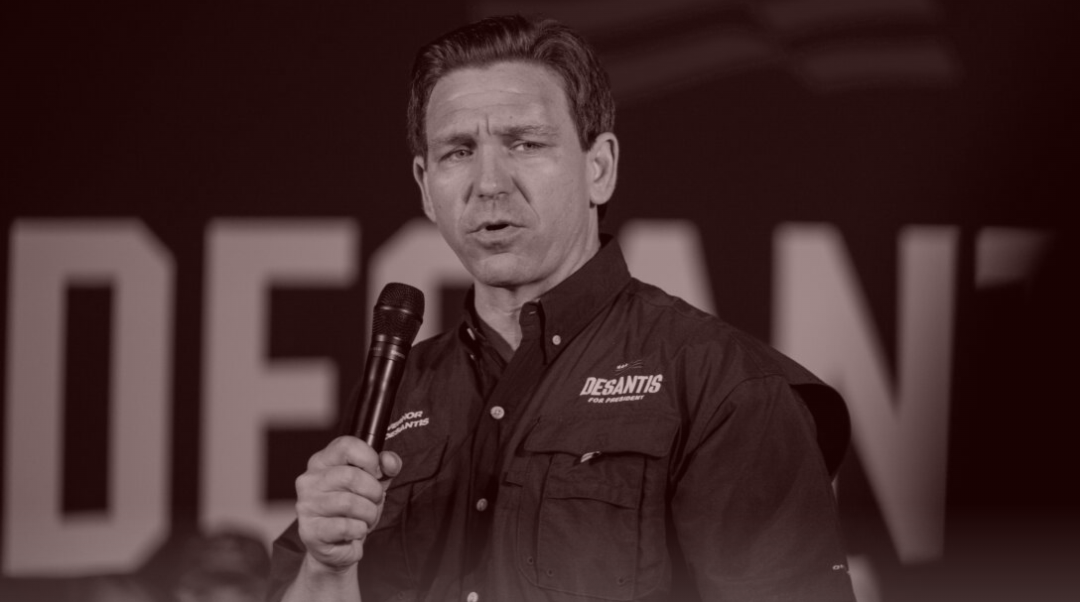 |
| The DeSantis Surveillance State, Revisited |
| Amid the recent reckoning over expenses and cutbacks, some close to DeSantis wonder if he and Casey can get past their paranoia and let the political pros do their jobs—so that the candidate can do his. |
|
|
|
| Back in 2022, I profiled Casey DeSantis, the telegenic and ambitious wife of Florida governor Ron DeSantis and his closest political advisor. One of the leitmotifs that kept reappearing in the reporting process was the couple’s paranoia over being targeted by unscrupulous political contractors or betrayed by disloyal insiders. Rising political stars attract big money, after all, and big money attracts graft-hungry, leak-prone operatives. “It’s very smart on the one hand,” one G.O.P. operative told me at the time. “It’s also not very smart on the other hand. It requires a surveillance state that requires a lot of resources and energy to keep up.”
In order to keep a closer eye on their resources, the DeSantii made a conscious decision to bring as much of their political apparatus in-house as possible, avoiding vendors and other third parties that might have lowered their costs. Graphic designers? Their own. Email lists and fundraising blasts? They built their own backend infrastructure, refusing to outsource just about anything.
In the short term, and in a very localized way, it worked: DeSantis coasted to re-election, earning the New York Post’s declaration that he was “DeFuture” of the G.O.P., with a robust firewall between him and any potential Republican turncoats who might run to Trump with valuable intel on his budding political operation. But the DeSantises also carried their paranoia with them when Ron stepped onto the presidential stage, where successful candidates are challenged to scale their organizations nationally. |
| DeSantis Management Theory |
|
| Politicians, who have ascended by micromanaging policy details and their own messaging, are usually some of the world’s worst professional managers—too hands-on, impatient, reactive, self-aggrandizing, etcetera. And the DeSantii, in particular, have taken this stereotype to its apotheosis with the apocryphal belief that they could create a sprawling political operation through the same small group of insiders who fueled their Florida journey. This turned out to be unwise, both tactically and financially. “They would not work with an agency,” a source familiar with the campaign’s inner workings told me. “They wanted to do a completely in-house digital program, which requires like 20 or so people at minimum. It also requires multimillion dollar investments, because it costs money to build the content.”
Yes, lots of money, in fact. Email lists are expensive. So are thousands of little graphics and hundreds of pieces of copy micro-targeting specific voter profiles. Internal widgets that measure open rates and donation inflow. And so forth. “It is a complex thing to raise that amount of money $5 and $10, and $15 increments,” the source continued.
Especially when wealthier donors, of which DeSantis has quite a few, are limited to giving $3,300 per candidate. The DeSantis campaign has raised $20.1 million since its May launch, not an unimpressive number, but the latest F.E.C. fundraising reports reveal that fundraising has slowed. Even more alarming, the campaign has burned through 40 percent of what they’d raised. ($3 million is earmarked for the general election and cannot be spent on the primary.)
The high rate of spending has not gone unnoticed by top donors or by the DeSantis campaign, which fired a number of staffers last week, ostensibly in order to trim payroll—news that landed just as DeSantis was trying to capitalize on an appearance with Tucker Carlson at the Family Leadership Summit in Iowa. Meanwhile, DeSantis has barely budged in the polls: He’s not slipping downwards, but he’s not trending up, either, even as Trump wrestles with two indictments and is now preparing to face a third. Allies close to the campaign have said that Generra Peck, DeSantis’ campaign manager, is “hanging by a thread.”
It’s all led to another news cycle whose primary storyline is that DeSantis is losing momentum—not just to Trump, but also to other questionably viable Trump alternatives, such as Tim Scott, who’s now getting a second look from big donors. (Though I urge you to read my Puck partner Peter Hamby’s deconstruction of that brilliant idea.)
DeSantis boosters have countered that their primary strategy hinges on strong showings in early battlegrounds like Iowa, where DeSantis can ostensibly notch some kind of victory, allowing him to flip the narrative surrounding his campaign. But among the professional political class, at least, the decision to go all-in on courting Iowa voters has been met with derision. “They’re TOTALLY TURNING THE CORNER,” an anti-DeSantis operative texted me, along with a GIF of the violinist on the Titanic.
Asked for comment, a spokesperson for DeSantis directed me to Peck’s comments to NBC, including the zinger, “No one in this race has been under fire more and won than Gov. DeSantis. He’s ready to prove them wrong again. Buckle up.” |
|
|
| As I watched DeSantis chat with Tucker while his campaign spiraled, I couldn’t help but think of the shrewd assessment that the G.O.P. operative had made all those months ago. Indeed, it has seemed as though the DeSantises’ collective paranoia has led them to profoundly mismanage the campaign. It’s hard to imagine they’d be in this pickle had they brought in a cohort of political professionals to manage the operation at scale, and put the cash to use effectively; had they not been so beholden to a Tallahassee political class that was leaning over its skis; and had they let Jeff Roe out of hiding at the PAC.
The DeSantis campaign was always focused on performing well, if not winning, the early primary states of Iowa and New Hampshire, but the sudden money crisis has placed a bigger emphasis on winning the very first state. “Going into this, DeSantis was supposed to win New Hampshire. That was his best polling state, and now he's not polling very well there,” a Republican operative who supports DeSantis told me. “You can’t lose Iowa going into New Hampshire. If you’re losing Iowa, you’re not gonna get a bounce all of a sudden in New Hampshire. And if you can’t do that, you have to try to roll that into convincing South Carolina, where Trump is incredibly strong, still.” It’s also home to Scott and Nikki Haley, whose hometown advantage would likely eat into DeSantis’s potential voting share.
To his credit, DeSantis does have the political relationships to pull off the “Full Grassley,” as his campaign dubbed his attempt to visit every single county in the state. Namely, he has a close relationship with Iowa’s popular governor, Kim Reynolds, built over their shared approach to Covid and their strong social conservatism, as well as their ability to execute that vision and maintain their popularity in what are, ostensibly, swing states.
Reynolds has not yet announced her endorsement, nor has Bob Vander Plaats, the head of the Iowa-based right-wing religious interest group The Family Leader, who has openly said the party should “move on” from Trump. DeSantis has other potential advantages here, too. As I learned on the ground in Iowa last week, Trump made a real mistake in avoiding the Family Leadership Summit, where every other G.O.P. presidential candidate submitted themselves to a Carlson inquisition in front of a room full of skeptical evangelicals. He also clearly misstepped by insulting Reynolds for staying “NEUTRAL” in the primaries, implying, as he does, that she would not be anywhere without his endorsement.
But while he may be welcome among Iowans, campaigns cost money. Even getting people from point A to point B in Iowa costs money. And with fundraising slowing down, and his extremely loaded super PAC, Never Back Down, unable to coordinate with DeSantis in any way, the campaign’s cost-cutting is about to get painful. “I mean, if you just go and look at cash flow over the first six weeks, having not put a single point on TV, not having a broader marketing execution… all those things are tough to keep up with when the money is coming in at the pace that it’s coming in,” the source familiar with the campaign told me.
“And it’s going to be even harder,” this person added. “Because when you’re down on the polls, and you’re reading stories about cutting staff, etcetera, now your investors kind of come in with an eyebrow raised, and not Oh, my God, Ron DeSantis is the next president of the United States. So it’s gonna be a really difficult time. And what that means, ultimately, is they probably won’t be able to run an ad for a long time.” |
|
|
| My sources were quick to argue that DeSantis’s problems are not an issue of so-called candidate quality. As awkward and wooden as DeSantis can come across, and despite his spending problems, he still raised more money than all the Not Trump rivals.
“He hasn’t said anything wrong or done anything wrong. He hasn’t like, you know, rolled his eyes at campaigning. I think he needs to probably go do a little bit more. But you’ve got a great candidate with a great message,” the source familiar with the campaign continued. “You’ve got an audience with the ears to hear the message. And you’ve got a team of talented people who are fully committed to making sure that he wins the nomination and the presidency. So there’s a lot of upside. But I think it’s got to go through some painful evolutions of readjustment to be able to thrive.”
Cutting unnecessary costs, of course, is the most important move for DeSantis, as is finally letting go of his paranoid instincts and hiring cheaper outside service providers rather than sticking with loyalists. Others pointed to the importance of locking down his relationships in Iowa. “I don’t believe that it’s their campaign structure that's going to deliver them Iowa,” the Republican operative said pessimistically. “I believe it’s Bob Vander Plaats and potentially Kim Reynolds.” Expect to see more blatant signaling to the Never Back Down super PAC on where to send their money.
But if the campaign cannot get its act together in the next several months, DeSantis is going to have to buckle down, stack his schedule with five campaign stops a day, and put in nonstop facetime with Iowa voters and local power brokers. John McCain’s successful 2008 campaign is a perfect example, allies say: His lackluster fundraising in 2007 led him to slash nearly 100 staffers from his payroll and forced him to focus exclusively on the early states. And yet he still won the primary.
At the same time, absent a fundamental reassessment of its campaign structure, the DeSantis family surveillance state—a functional mini authoritarian regime inside Florida, but an unwieldy proposition for a nationwide campaign—may hinder their growth. “If you have the money to do it, it’s brilliant. But if you don’t have the money, it is just like dipping yourself in cement shoes, and hoping that you break free,” the source familiar said. “I think the governor can get great momentum. If anybody can say and do the thing that you would need to do to get that, it’s him. But at this point, it can’t just be theoretical. It’s got to come to life.” |
|
|
|
| FOUR STORIES WE’RE TALKING ABOUT |
|
|
|

|
 |
|
|
|
Need help? Review our FAQs
page or contact
us for assistance. For brand partnerships, email ads@puck.news.
|
|
You received this email because you signed up to receive emails from Puck, or as part of your Puck account associated with . To stop receiving this newsletter and/or manage all your email preferences, click here.
|
|
Puck is published by Heat Media LLC. 227 W 17th St New York, NY 10011.
|
|
|
|

